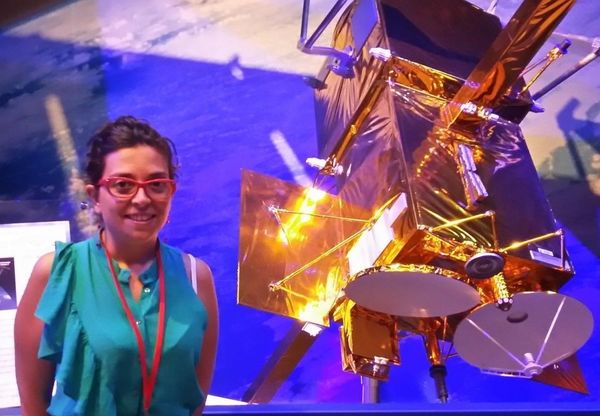Annunziata Pirro at the ESA's workshop on Earth System Monitoring and Modeling

Annunziata Pirro is a fifth year Ph.D. candidate in the Department of Civil and Environmental Engineering and Earth Sciences at the University of Notre Dame. Through the Rome Global Gateway short-term graduate research fellowship this summer, she attended the European Space Agency’s (ESA), Earth Observation (EO) workshop on Earth System Monitoring and Modeling.
Pirro’s research aims to increase the forecasting accuracy of weather models of the Indian Ocean Monsoons (IOM) by better understanding the role of the Indian ocean, and in particular, the Bay of Bengal (BoB) on atmospheric dynamics. The ability to forecast the IOM well in advance will mitigate the impact of natural disasters for more than a billion people in the coastal communities of Southeast Asia, with a resulting improvement of their quality of life. In order to answer her research questions, Pirro combines satellite data and oceanic in-situ observation that she collected during two scientific cruises in the BoB. The two-week intensive course (with 70 participants from all over the world) promoted the exploitation of EO satellite data across disciplines, with a specific focus on their assimilation into Earth System models. Topics included physics of remote sensing measurements, applications of EO, numerical weather prediction, theory of data assimilation techniques, forecast and management of environmental issues for the benefits of the society.
How was the course organized and what did you learn from it?
Every day, in the morning, I attended keynote lectures in a variety of Earth Science disciplines, while in the afternoon I conducted a small research project in EO Data Processing using ESA EO Toolboxes. The morning sessions, especially the one focused on the ocean, were highly beneficial for my research as I was able to learn more about ocean satellites products and different techniques that integrate the use of satellite observations with in-situ data. Thanks to the workshop, I will use these remote sensing techniques to analyze the in-situ data collected during my previous cruises. During the afternoon practical sessions, I learned how to use software such as ASAP and Ocean Color Lab, which are very helpful tools used to analyze satellite data directly from the source.
What other opportunities came out of your participation to the course?
The 2018 ESA EO course was the perfect platform to establish successful scientific collaborations. I had the opportunity to meet with Martin Visbeck, the chair in Physical Oceanography at the Leibniz Institute of Marine Sciences at the University in Kiel. His research field closely aligns with mine, and my goal is to begin a collaborative research with him by applying for the ESA post-doc Living Planet Fellowship. My dream would be to facilitate the participation of the University of Notre Dame in this partnership as well.